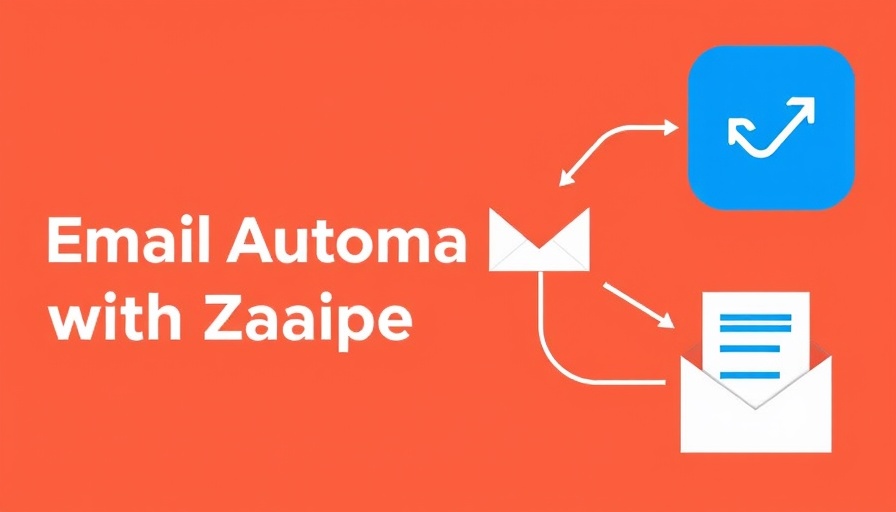
Unlocking the Power of Email Automation with Zapier
In today’s fast-paced digital world, managing email can feel like an overwhelming task. Email automation serves as a lifeline for marketing professionals, allowing them to streamline their communications with clients and prospects. By leveraging tools like Zapier, marketers can implement automated email workflows that not only enhance efficiency but also provide a more personalized experience for their audience.
Understanding Email Automation: The Basics
Email automation refers to the process of using software to send emails automatically based on pre-defined triggers or conditions. This approach can transform the way businesses communicate by ensuring timely and relevant messages reach the right people without manual intervention. Imagine a scenario where customers receive a welcome email the moment they sign up for a newsletter, or a timely follow-up based on their website interactions—this is the essence of email automation.
Email Automation vs. Email Marketing Automation: What’s the Difference?
While the terms might seem interchangeable, there’s a critical distinction between email automation and email marketing automation. The former encompasses a broader range of functionalities, including personal workflow management such as auto-replies, tagging, and organization of emails. In contrast, email marketing automation focuses exclusively on the marketing aspect—automating campaigns, newsletters, and outreach efforts to scale engagement with a target audience effectively.
Why Should You Automate Your Emails?
The benefits of embracing email automation are numerous:
- Increased Personalization: Automated emails can be tailored to include dynamic fields such as the recipient’s name or recent interactions, offering a personal touch that can lead to higher engagement rates.
- Time Efficiency: By setting up automated workflows, marketing professionals can free up valuable time that would otherwise be spent crafting individual emails.
- Improved Customer Engagement: Timely communication, such as confirmation emails or special offers triggered by a user’s actions, fosters better relationships with customers.
How to Get Started with Email Automation Using Zapier
To begin automating your emails with Zapier, follow these steps:
- Define Your Workflow: Identify the common tasks or communications that could benefit from automation. For instance, responding to new leads or sending follow-up messages.
- Select Your Apps: Zapier integrates with an array of applications. Choose the ones you already use, like Gmail or Mailchimp.
- Create Zaps: Use Zapier’s intuitive interface to set triggers and actions. For example, you can set a 'Zap' that triggers an email each time a form is submitted on your website.
Future Trends in Email Automation
As technology continues to advance, the capabilities of email automation will also evolve. More AI-driven personalization, seamless integration of multiple channels, and smarter predictive analytics will likely emerge, paving the way for even more targeted marketing strategies. Understanding these future trends can help marketing professionals stay ahead of the curve and leverage new opportunities as they arise.
Conclusion: Take the Leap into Automation
For marketing professionals looking to enhance their strategies, email automation with tools like Zapier is a game changer. Not only does it streamline communication, but it also fosters deeper connections with customers through personalized interactions. If you haven’t begun to explore email automation yet, now is the time. Start by mapping out your workflows and utilizing the powerful features Zapier offers to boost your email engagement and efficiency.
 Add Row
Add Row  Add
Add 




Write A Comment